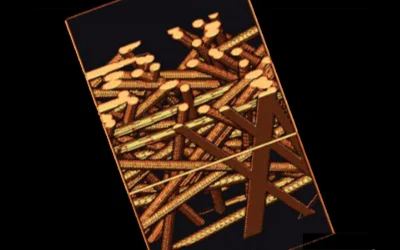To comply with upcoming laws in the European Union that require up to 95% of an automobile's weight to be recycled it is desirable to rapidly develop acoustic trim made from the least amount possible of single, easily recyclable material. The goal of the "Integrated Product Policy" (IPP) Project at the Fraunhofer Research Institute for Industrial Mathematics (ITWM) and the partners Audi, Sandler and Faurencia is to develop improved acoustic trim by running computer simulations for fiber geometry, fluid dynamics and acoustic and calibrating them with acoustic experiments performed on real trim. A computer model with few probabilistic parameters such as fiber density, fiber radii and fiber orientation represents the non-wovens in the GEODICT fiber geometry simulation software package. Fluid dynamical properties of the non-woven are simulated using the ITWM's fluid dynamics package PARPAC. Based on the fluid dynamics, acoustic measurements on the trim in the Kundt-tube are simulated using the ITWM's 1D acoustic simulation package AKUDICT. Acoustic measurements inside 3D cavities (for example the alpha-cabin) are simulated with statistical energy analysis (AutoSEA2) where the output of the previous simulations is used as input. Next, the 3 stage sequence of simulations is inverted. To achieve the desired acoustic behavior, AutoSEA2 performs the evaluation of the objective function in the optimization to find desired fluid dynamical properties of the acoustic trim. To achieve the fluid dynamical properties, appropriate stochastic properties of the non-wovens are found. These are finally translated into production parameters. IPP is sponsored by the IPP initiative of the Bavarian State Ministry for Regional Development and Environmental Affairs.
Computer Modelling and Design of Non-Woven acoustical Trim
